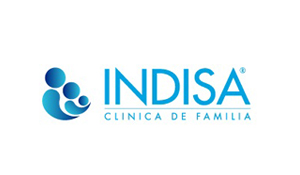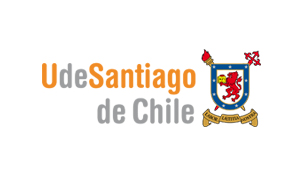Of note, studies of adult twins, and particularly monozygotic twins, can usefully deal with issues of shooting life that is early and evaluating the share of youth and adult conditions on adult wellness. The reason being monozygotic twins raised together through youth (a) are tightly matched on both endowment that is genetic the socioeconomic circumstances characterizing their gestation and very very very early life and youth household resources [4–6], and (b) are identical biological sex, so they really are usually accorded the exact same sex objectives rather than have differential therapy or usage of home resources for their gender [6,15]. Therefore, also with no dimension of childhood conditions, an assessment of adult monozygotic twins who will be concordant versus those who find themselves discordant on adult socioeconomic place permits ascertainment associated with degree to which socioeconomic place after youth affects adult health, far beyond the impact of youth socioeconomic place. Twin analyses using diverse socioeconomic measures shooting circumstances earlier in the day versus later on in adult life may also possibly produce understanding of the effect of cumulative position that is socioeconomic wellness, with interpretation of outcomes for monozygotic twins, including habits of within-pair variability, aided in contrast to brings about same-sex dizygotic twins.
Therefore, our goal, framed by ecosocial concept and the lifelong embodiment to its concern of social conditions [15,23], would be to compare health status among a cohort of monozygotic and dizygotic females twins with provided upbringing (at the very least until age 14) and concordant versus discordant adult socioeconomic place. Outcomes included markers that are biological anthropometric and wellness outcomes, and wellness actions. We used information on both adult work-related course and educational degree, hypothesizing that the former might capture appropriate facets of socioeconomic place occurring after conclusion of academic attainment.
Learn Populace
The analysis twin pairs were people in the Kaiser Permanente Women Twins Study Examination II, carried out in 1989–1990 in Oakland, Ca, United States [24]. The assessment I cohort included 434 twin pairs recruited in 1978–1979 from a twin registry created in 1974 during the Northern Ca Kaiser Permanente healthcare Care Program. All individuals resided into the san francisco bay area Bay region during the time of Examination I and had been created in or ahead of 1960 (mean age, 41 y; range, 18–85 y).
Zygosity for every single set had been based on analysis of 20 loci that are polymorphic in a way that the chances of misclassification as monozygous had been not as much as 0.001 [24].
For Examination II (1989–1990), original cohort users had been delivered a self-administered questionnaire on the health insurance and sociodemographic faculties plus an invitation to go back for a physical exam [24]. Cohort retention ended up being high: just 72 ladies (8.3%) failed to react, of who 36 had been deceased. Among the list of 796 participants, only 87 (10.9%) failed to get back for the real exam. After additionally excluding five females whoever twin had been a nonrespondent, the Examination II cohort included 352 twin pairs (58% monozygotic and 42% dizygotic), representing 81.1% of this initial cohort. Enrollment and research regarding the twins both in cohorts had been authorized because of the Kaiser Permanente healthcare Care Program, Northern Ca area, Institutional Review board; analyses with this research had been also authorized because of the Harvard class of Public wellness Human Subjects Committee.
Socioeconomic Information
Childhood and adult socioeconomic position had been calculated at Examination II utilizing a questionnaire that is self-administered. We employed a modified version of Erik Olin Wright’s occupational course schema [12,16,25–27], analogous into the great britain’s newly established National Statistics Socioeconomic Cam4 mobili category system (NS-SEC) [28]. Distinctions, so as of dominance, had been between individuals categorized as “nonworking class” (NWC; very own a business and use others, self-employed, or supervisory workers), “working course” (WC; nonsupervisory workers), or otherwise not when you look at the compensated labor pool [12,16,25–27].
We defined “childhood home social course” because the work-related course place of the individual recognized as the head-of-household as soon as the respondent ended up being age 14; we additionally ascertained the percentage of twins whom lived together until at age that is least 14.
We measured household that is adult course utilizing a validated, gender-appropriate approach, corresponding to probably the most principal course place, taking into consideration the most common specific course position regarding the respondent and her partner or other head-of-household, if any [16,25,26]. Utilizing a gender-neutral way of calculating home course is increasingly seen as a more legitimate way of evaluating home socioeconomic position than the one which immediately assigns it to either (a) the respondent, whether a female or guy, or (b) the career for the adult man into the home ( if an individual occurs), because of the increase of twin wage-earner households [16–18,27–32]. For instance, the brand new British NS-SEC measure explicitly rejects the last main-stream training of “males using precedence over females” whenever choosing the “household reference individual” for project of home class, and alternatively chooses in relation to “the individual accountable for having or leasing or that is otherwise accountable for the accommodation,” regardless of gender [29]. We additionally obtained information regarding the academic degree accomplished by each twin and their dad. No data had been available, nevertheless, on youth or adult home earnings, wide range, or financial obligation, or regarding the academic amount of the mom.














Comentarios recientes